Audio Autopsy, 1970-1986: A Little Bit of Pop--Paul Davis and the Promising Career That Simply Wouldn't...Until "Today"
Easy, melodic pop was the hallmark of the short, tuneful Davis canon. While getting that occasional rock hit, he made a sudden turn to Nashville where Marie Osmond proved he was a little bit country.
Clearly gifted, Paul Davis, instead of moving to Hollywood from his Meridian, Mississippi birthplace (where his father was a preacher), stayed true to his southern roots and took his evident songwriting talents to Memphis in 1968. He was 20.
The eventual 2010 Nashville Songwriters Hall of Fame inductee left behind a glittering collection of beautifully-crafted songs—delivered with an effortless tenor—many of which became hits.
With all his natural talents, he could’ve been huge…he should be on our lips and have a dedicated Sirius/XM satellite radio station. So, why wasn’t he Billy Joel? Why didn’t he become Neil Diamond (who left Bang Records, Paul’s first label, a year before Davis signed)?
Interestingly (and certainly not by accident), the man who headed up the label (Columbia Records) who sprung Joel and Diamond into the stratosphere in the ‘70s, came to the rescue at one point: Clive Davis (no relation) signed Paul to his Arista Records for one last album in 1981, hoping to “airlift” the singer/songwriter from tiny label oblivion. True to Clive, three relative hits emerged, but…..(and, it was a big but)….
By that time, Paul Davis had grown disillusioned with the whole star-maker machinery grind, and wondered if there might be some other way to utilize his unique talents.
Side 1: Pop and Circumstance
After banging around with a couple of Meridian mid-’60s cover bands, Davis moved to Jackson, Mississippi in 1968, and landed a songwriting gig with the independent Malaco Records and their affiliated publisher.
The label was the early home of some major blues, Gospel and R&B acts, such as Bobby “Blue” Bland, Z. Z. Hill, Denise LaSalle, Little Milton, Shirley Brown, and Tyrone Davis.
Tapes of Paul Davis’s fully-produced demo work at Malaco have recently emerged, and the seeds of his eventual work are clearly evident, particularly in the gripping chord changes and pure pop sensibilities, including “Now and Forever More”:
…and, “I Know a Place”:
Paul got his first break in 1969, when he was signed by Ilene Berns to Bang Records as a recording artist. Ilene, 26 when she signed Paul, was basically running Bang, which was co-founded by her husband, Bert, who died of heart failure in ‘67.
Bert was the “B” in Bang, with fellow founders, Atlantic Records execs Ahmet Ertegun, Nesuhi Ertegun, and Gerald (Jerry) Wexler providing their initials for the label’s acronymic name. Each, especially the Ertegun brothers and Wexler, are as highly-regarded and established as ground-breaking record execs for Atlantic (and the WEA corporate monolith) as Clive was for Columbia and Arista.
The first couple years of Bang’s existence (1965-66), they were distributed by Atlantic, but had become independent by Davis’s signing. In 1979, Columbia Records had reared its corporate head (again) and purchased Bang Records!
A Little Bit of Paul Davis
Paul’s debut Bang album, A Little Bit of Paul Davis, was released in 1970, as was his first single (with Ilene Berns dutifully keeping the publishing in the family), a cover (produced by Davis) of The Jarmels’ 1961 hit, “A Little Bit of Soap” (#1 on the chronological Playlist above) written by her recently-deceased husband, Bert. Where the original made it to #12 on the charts nine years previous, Davis’s peaked at #52 on Billboard’s Hot 100.
Paul’s second album, the self-titled Paul Davis (released in December 1973), featured just one single, the autobiographical, “Boogie Woogie Man.” It managed to make it to #68 on the chart. Judging by his lyrics, it seems Paul was slowly discovering the “game” and how it should be played:
Sample lyrics:
Get yourself a crew cut
Your hair’s too long
I hear it over and over
And over againEverybody's telling me
What I oughta beWhy can't everybody see
I just wanna be
A boogie woogie man
Do the best that I can
To make a living
By giving my songs
Yeah, a boogie woogie man.
An A&R Dream Becomes a Marketing Headache (and an Art Director’s Nightmare)
Chic Bones or Full, Beered?
I suppose if Paul Davis had been “pretty,” magazine covers would’ve piled up, Gloria Stavers would’ve had him on speed-dial, label art directors would have stocked up on lens filters, gauzes and fancy backgrounds, and full-color posters would have festooned teen girls’ bedroom walls.
Remember, this was the decade of the “soft focus” pop recording artists (many, if not most, crossed-over from the large or small screen at some point): David Cassidy and Shaun Cassidy, Leif Garrett, Scott Baio, Alessi Brothers (shown below), John Travolta, Donny Most, Jimmy and Kristy McNichol, Lynda Carter, Cheryl Ladd, and any number of limited-edition porcelain figures from the Osmond Breeding Farm, each one prettier than the one before.
Shallow? Sure. Pandering? Of course. Big B.O. (box office or sales)? You betcha! Welcome to Hollywood Record Biz Amalgamated Incorporated, circa 1970s!
Only Paul Davis didn’t play that game. He couldn’t, and he certainly didn’t want to! It could even be argued his choice of hirsute visage was a direct affront to such hollow hero-worship i.e. “I dare you to even think of pointing a Nikon in my general direction!”
With his long, unruly mane, ZZ Top beard, and denim couture, he came close to making Charlie Daniels (below, right) look like a Tiger Beat cover boy by comparison. But, Daniels was decidedly in the rock/Southern rock lane, and looks mattered little on the AOR landscape and its attendant FM radio dial.
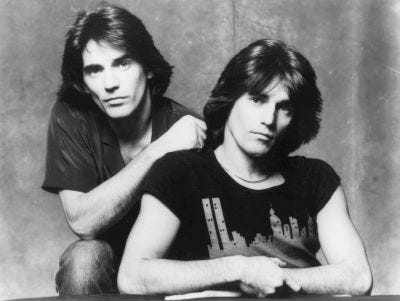
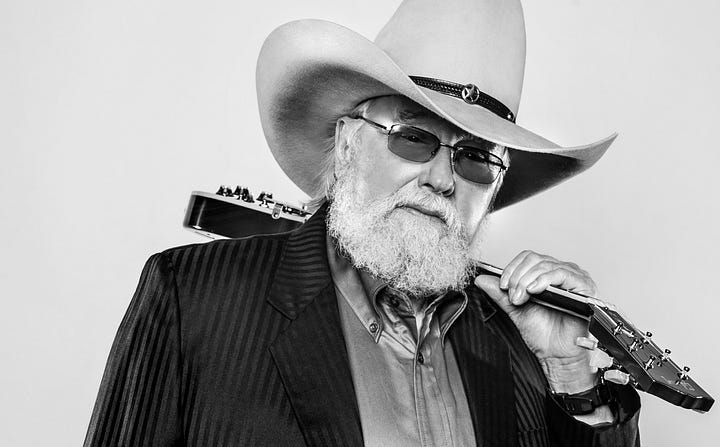
But, Davis’s mastery of buttery AM pop hooks made it imperative there be a concentrated effort to merge product with image, preferably one as “attractive” as possible, in whatever subjective way that can at least be universally attempted.
While A&R just sat back and grinned, knowing Paul had the singing and songwriting chops to make this happen, Davis would be, understandably, giving any label’s marketing and promotion departments fits, as they might’ve been heard to bellow: “How the heck are we supposed-ta pitch a lumberjack in plaid shirts to middle-America housewives?”
Probably with a knowing wink, Paul must’ve just joined the art department in throwing up their hands, sighing resignedly and confidently nodding: “Here’s my head shot for the cover, let’s do this; we’ll let the songs stand or fall on their own merit.”
Everybody's telling me
What I oughta beWhy can't everybody see
I just wanna be
A boogie woogie man?
It almost worked. It should’ve worked….long-term, too. But, as the artist, you kinda gotta wanna.
A Peek at the Future?
After a small handful of single releases languishing in the bottom half of the charts so beloved by the industry, Paul finally had a bit of a breakthrough: Fall 1974 saw the Bang release of Paul’s third album, Ride ‘Em Cowboy, with the single of the same name (Playlist song #2) climbing all the way to #23!
He also had a #4 hit in Adult Contemporary (AC, aka Easy Listening aka MOR or Middle of the Road) with the song, a lane he’d all but own going forward.
In fact, the passage of decades (and the insistent, knee-jerk labeling of all things musical by a meddling rock press) would saddle the Davis oeuvre as booking passage aboard the Yacht Rock vessel (with a second dinner seating, of course). On that voyage, he’d be joining fellow mellow performing passengers like Robbie Dupree, Gerry Rafferty, Paul Young, Boz Scaggs, Christopher Cross, et al.
Southern Tracks & Fantasies
Like leaving anonymous roses and candy kisses for a loved one, each new Davis album title seemed to be subtly hinting at a yearning…a musical longing, for a more satisfying lane than he was feeling while feeding the fickle pop music muse.
From Ride ‘Em Cowboy to Southern Tracks & Fantasies…if these were dime bags carelessly strewn around the apartment, we might consider this a cry for help.
Paradoxically, though, each new single not only sounded more methodically (and intentionally) pop-infused, but higher chart positions seemed to follow…at least eventually. Southern Tracks’ first single, “Thinking of You,” sounds southern, all right…southern California! L.A. nights, soaring and staccato synthesizers highlight this tune that only hit #45.
“Superstar” (Playlist song #4, and having nothing whatsoever to do with the Bonnie Bramlett/Leon Russell song that Carpenters made a hit in ‘71) got ten spots higher in the summer of ‘76.
Singer of Songs, Teller of Tales
1977’s Singer of Songs, Teller of Tales was the album by which most people first heard Paul Davis. He had his first American Top 10 single with the ballad “I Go Crazy,” which after 30 weeks on the Billboard Hot 100, peaked at #7 on March 18, 1978 (this writer’s 23rd birthday. I well remember playing and selling this album at my Houston record store). Davis co-produced the album, and noted producer/composer, Gene Page, arranged.
“I Go Crazy” spent 40 landmark weeks on the charts, which at the time, set the record for most weeks compiled. “Sweet Life” also did well, topping out at #17. In between the two, Davis duetted with singer/songwriter Susan Collins (pictured below) on The Beach Boys’ “Darlin’,” which hit #51 (it appears as Playlist song #6). While his first, it wouldn’t be Davis’s last duet with a female singer…not by a long shot!

1980: The 2nd Self-Titled Album, Amid the Shuttering of Bang
On May 17, 1980, Davis’s Gospel-tinged “Do Right” peaked at #23; he got a first-hand look of what actively working a record was like at the same time his label was busy folding. That’s the bad news; the good news is that, just prior to this album’s release, Bang was sold to CBS Records, but was able to keep its logo and label identity as it was folded into the CBS Associated Labels division (ala Portrait, Caribou, etc.) until 1982, when the artist roster was simply absorbed into Columbia proper.
A Savannah, GA radio phone interview (audio) with Paul Davis, 1980:
Cool Night: Enter Clive, Stage Left, 1981
All that Bang folderol and fall-out was rendered moot by 1981, when Clive Davis, as if saving a singer/songwriter from a sinking ship, brought Paul over to his Arista Records for his label debut, 1982’s Cool Night, his final solo pop album.
True to form (both Paul’s and that other Davis fellow), three subsequent hits emerged: The title track (#11 on the U.S. chart), “‘65 Love Affair” (besting his previous apex by one at #6), and “Love or Let Me Be Lonely,” which deserved a much better fate than its ultimate #40 summer ‘82 finish (it did reach #11 on the AC chart).
It was originally a 1970 #6 hit for The Friends of Distinction, and proved to be an inspired cover choice for Paul, well-executed, and co-produced by Ed Seay and Paul.
Related: Paul’s “Nathan Jones” cover (+ 3 others) given the Inside Tracks treatment, here:
Flip the Disc for Side 2: She’s a Little Bit Country
By the end of 1982, Davis had retired from making records for several years. An avid fisherman and golfer, he spent the mid-’80s indulging in these two loves, as well as his indoor sport of choice, billiards.
In 1986, Paul teamed up with Marie Osmond (now going by the single sobriquet, Marie), and proceeded to gallop to the top of the Billboard Hot Country Singles chart with his Paul Overstreet co-write, “You’re Still New to Me” (Playlist song #12, and a live TV performance video above).
Another #1 Country smash followed in 1988, with his collab with Tanya Tucker and Overstreet, singing “I Won’t Take Less Than Your Love” (Playlist #13).
Davis also wrote “Meet Me in Montana”, which his friend, Dan Seals and Marie took to #1 on the Billboard Country Chart in 1985 (Playlist #14). Dan was the brother of Seals and Crofts’ Jim Seals. Jim passed away in June 2022; “England” Dan passed in 2009. “Bop,” written by Davis and Jennifer Kimball, was a solo #1 country hit for Dan Seals in early 1986 (Playlist #15).
Live (TV?) performance with Crystal Gayle joining Davis, singing Paul’s rollicking “I Don’t Want to Be Just Another Love,” from his Singer of Songs album:
Paul Davis died of a heart attack at the Rush Foundation Hospital in Meridian, a day after his 60th birthday, on April 22, 2008. He didn’t want to leave until he laid down this demo, his greatest musical gift in a bouquet of heartfelt songs he gave us over a couple short decades….and, stunningly, mere weeks before his passing.
All he wanted was to “Do Right.” Turns out he was right all along, and not just yesterday: It’s not about the photo on the cover. It’s always only been about the lyrics and the melody. The song…as true yesterday as it is “Today”:
Update, January 4, 2025: Paul’s “Today” song, as you can see by the updated YouTube message, below, is no longer available. It’s not on Spotify, either. If anyone can find it elsewhere on the ‘net, kindly leave a note and the link in the comments below! Thanks!
Thank you, Paul. For songwriters everywhere for your rare and precious gift.




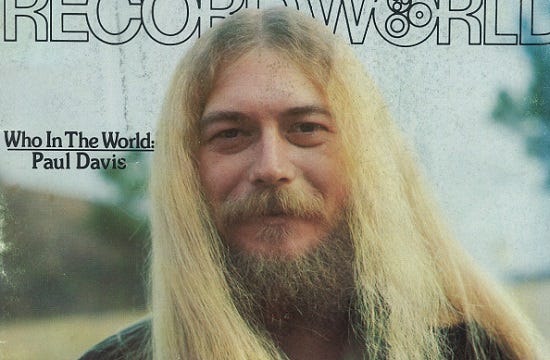
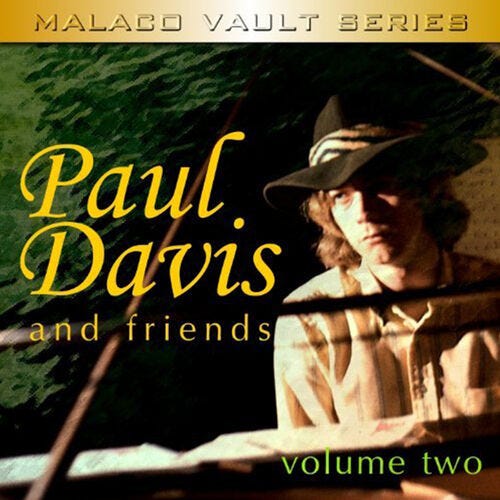
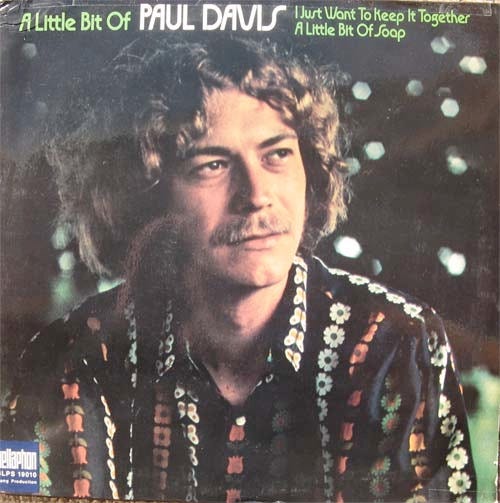
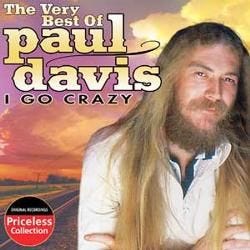
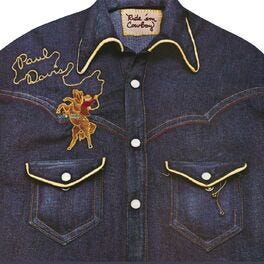
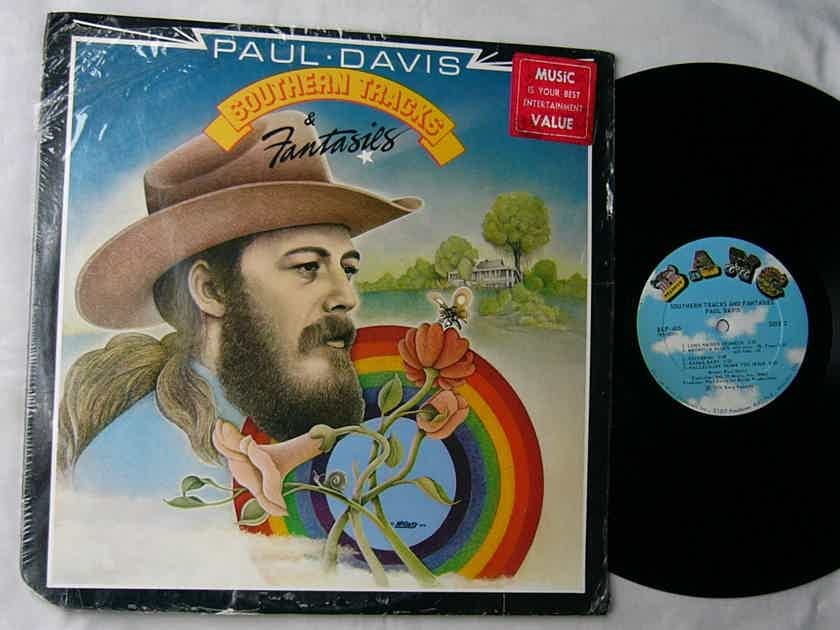
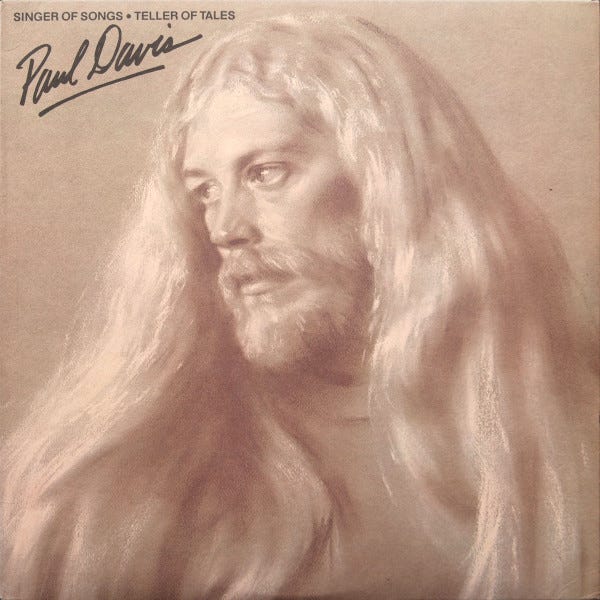
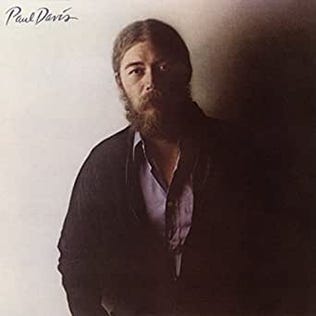

Wow. Your deep dives continually amaze. I've just listened - probably for the first time since the late 70s - to 'I Go Crazy' ... and I'm back in my bedroom playing with my Star Wars figures while the radio is on constant. Yet another outstanding issue - thanks!
Isn't the tension between commitment to one's art and the demands of the image machine at the heart of much that is wrong with the industry? As always, Brad, amazing, in depth look at an artist, in this case one I'd never heard of. The Marie duet also took me aback because it reminded me of how great her voice was.